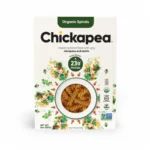Bistro sauce is a flavorful condiment that can transform basic ingredients into a restaurant-worthy dish. But what exactly is bistro sauce? In this guide, we’ll cover everything you need to know about this tangy, creamy sauce.
Overview of Bistro Sauce
Bistro sauce is a creamy, piquant sauce typically served as a dip, spread, or accompaniment to enhance the flavor of foods like:
- Chicken wings and tenders
- French fries
- Burgers and sandwiches
- Veggies
- Potato skins
- Fried appetizers
It can turn a basic food into a mouthwatering snack or meal with its addictive zesty, savory taste.
While recipes vary, classic bistro sauce contains a ketchup and mayonnaise base amped up with spices, herbs, and tangy ingredients like mustard, horseradish, hot sauce, Worcestershire sauce, and lemon juice.
The result is a versatile condiment with a:
- Creamy, smooth texture
- Sweet and tangy flavor
- Savory undertones
- Mild to moderate spicy heat
Next, let’s look at the origins of the bistro sauce name.
Where Does the Name “Bistro Sauce” Come From?
The term “bistro” comes from France, referring to small restaurants serving moderately priced, simple food in a casual setting.
Bistro sauce gets its name from the zesty condiment commonly served for dipping and drizzling in French bistros. It adds big flavor to simple fried foods and snacks.
Some accounts credit Chef George Briguet of Michelin two-star restaurant Le Bistro de Paris for inventing bistro sauce in the 1980s. However, zesty condiments like rémoulade and comeback sauce share similar flavor profiles.
Regardless of origins, bistro sauce remains a popular American staple thanks to its crave-worthy blend of creamy, spicy, and tangy flavors.
What Does Bistro Sauce Taste Like?
When you combine ketchup, mayo, mustard, herbs, spices, and lemon juice, you get a dynamic flavor medley in bistro sauce. Here are the main taste elements:
-
Creamy – A rich, silky base from mayonnaise.
-
Tangy – Tartness from mustard, horseradish, hot sauce, and lemon juice.
-
Sweet – Ketchup and spices lend a subtle sweetness.
-
Savory – Salty, umami depth from Worcestershire and spices.
-
Spicy – Most recipes have mild to moderate heat.
-
Herbal – Fresh herbs like parsley, chives, dill, or tarragon.
It strikes the perfect balance between cool, rich creaminess and lively tangy, spicy brightness. This makes bistro sauce extremely craveable!
Now let’s look at the typical ingredients that give bistro sauce its signature kick.
Common Bistro Sauce Ingredients
There are many ingredient variations, but most bistro sauce recipes include a few key components:
- Mayonnaise – Thick and creamy base
- Ketchup – Sweet, salty, tomato flavor
- Mustard – Spicy, tangy yellow or Dijon
- Worcestershire Sauce – Savory, umami depth
- Hot Sauce – Vinegar, chili heat
- Lemon Juice – Bright, tart acidity
- Herbs – Fresh parsley, chives, dill, etc.
- Garlic – Pungent seasoning
- Spices – Paprika, cayenne, black pepper
Certain ingredients can be swapped to customize flavor and spice level. For example, Sriracha can replace generic hot sauce for a bolder chili kick.
Experiment with different ingredient combos until you achieve your ideal zesty, lip-smacking bistro sauce flavor!
How to Make Easy Homemade Bistro Sauce
Making your own bistro sauce is simple, fast, and infinitely better than store-bought versions.
Here is a basic recipe to get you started:
Ingredients:
- 1⁄2 cup mayonnaise
- 1⁄4 cup ketchup
- 1 tablespoon Dijon mustard
- 1 teaspoon Worcestershire sauce
- 1 teaspoon lemon juice
- 1 small garlic clove, minced
- 1⁄2 teaspoon paprika
- 1⁄4 teaspoon dried dill (or 1 Tbsp chopped fresh dill)
- Salt and pepper to taste
Instructions:
-
In a small bowl, combine all ingredients except salt and pepper. Whisk well until fully blended and smooth.
-
Season to taste with salt and pepper.
-
For best flavor, cover and refrigerate 1-2 hours before using to allow flavors to meld.
-
Store leftover bistro sauce in an airtight container up to 1 week.
Now that you know how easy it is to make, let’s look at the many ways to use bistro sauce!
Ideas for Using Homemade or Store-Bought Bistro Sauce
A jar of zesty bistro sauce offers endless possibilities to upgrade snacks, sandwiches, appetizers and more. Here are some bistro sauce uses:
- Dipping sauce – For French fries, tater tots, onion rings, chicken tenders
- Sandwich spread – On burgers, subs, wraps, paninis
- Potato topper – Baked potatoes, sweet potato fries
- Salad dressing booster – Whisk with vinaigrettes
- Vegetable dip – Raw veggies, steamed artichokes
- Burger/sandwich booster – Spread on patties or bread before adding toppings
- Pizza flavor enhancer – Drizzle over finished pizza
- Nacho/taco topper – For an extra flavor punch
- Fry seasoning – Toss wings or strips with sauce before baking/frying
With its ultra-versatile flavor, the possibilities are endless for how to enjoy bistro sauce at home.
Tips for Making the Best Bistro Sauce
Here are some tips to help you maximize flavor in homemade or store-bought bistro sauce:
-
Use fresh garlic and herbs for brightness. Jarred garlic and dried herbs won’t be as pungent.
-
Let sauce chill at least 1-2 hours for best flavor development.
-
Add freshly cracked black pepper just before serving for an extra spice kick.
-
Adjust ketchup amounts based on desired sweetness level.
-
For smoother consistency, blitz in a blender after whisking.
-
Thin with a bit of milk or water if sauce is too thick.
-
Play with different acid sources like hot sauce, vinegar, or citrus juice.
-
Spice it up with extras like cayenne, paprika, chili powder, or horseradish.
With the right ingredient amounts and proper chilling time, you’ll achieve ideal creamy, spicy, and zesty bistro sauce bliss.
Storing and Freezing Bistro Sauce
To retain fresh flavor and texture, follow these bistro sauce storage guidelines:
-
Keep refrigerated airtight up to 1 week.
-
Do not freeze, as texture will be compromised when thawed.
-
For longer shelf life, store in sterile jars processed in a water bath canner up to 1 month shelf stable.
-
If bistro sauce separates, stir vigorously before using. Discard if it appears curdled.
-
Keep sauce away from direct sunlight, which can cause fading over time.
Make sure you properly seal and refrigerate any leftovers. Sadly, the deliciousness of bistro sauce doesn’t last forever!
Frequently Asked Questions
Here are answers to some common bistro sauce FAQs:
What’s the difference between bistro sauce and fry sauce?
Fry sauce contains ketchup, mayo, and spices. Bistro also includes extra tangy ingredients like mustard, lemon juice, and Worcestershire.
Can you use bistro sauce as a salad dressing?
Yes, whisk or blend bistro sauce with olive oil and vinegar for a zesty salad topper.
Is bistro sauce spicy?
It has mild spice from ingredients like mustard, horseradish, and hot sauce but isn’t extremely hot. Adjust spices to your taste preferences.
What’s the best way to use bistro sauce at home?
As a dip for fried foods like fries, skins, wings, and onion rings or drizzled on burgers and sandwiches.
Can I make bistro sauce without mayo?
You can try substituting plain yogurt or sour cream but mayo provides the signature rich, creamy base.
The Bottom Line
Bistro sauce is a zesty condiment made from a ketchup and mayonnaise base amped up with spices and tangy ingredients. It can take a basic meal from
https://www.food.com/recipe/bistro-sauce-388727
https://thefoodxp.com/bistro-sauce-recipe/




